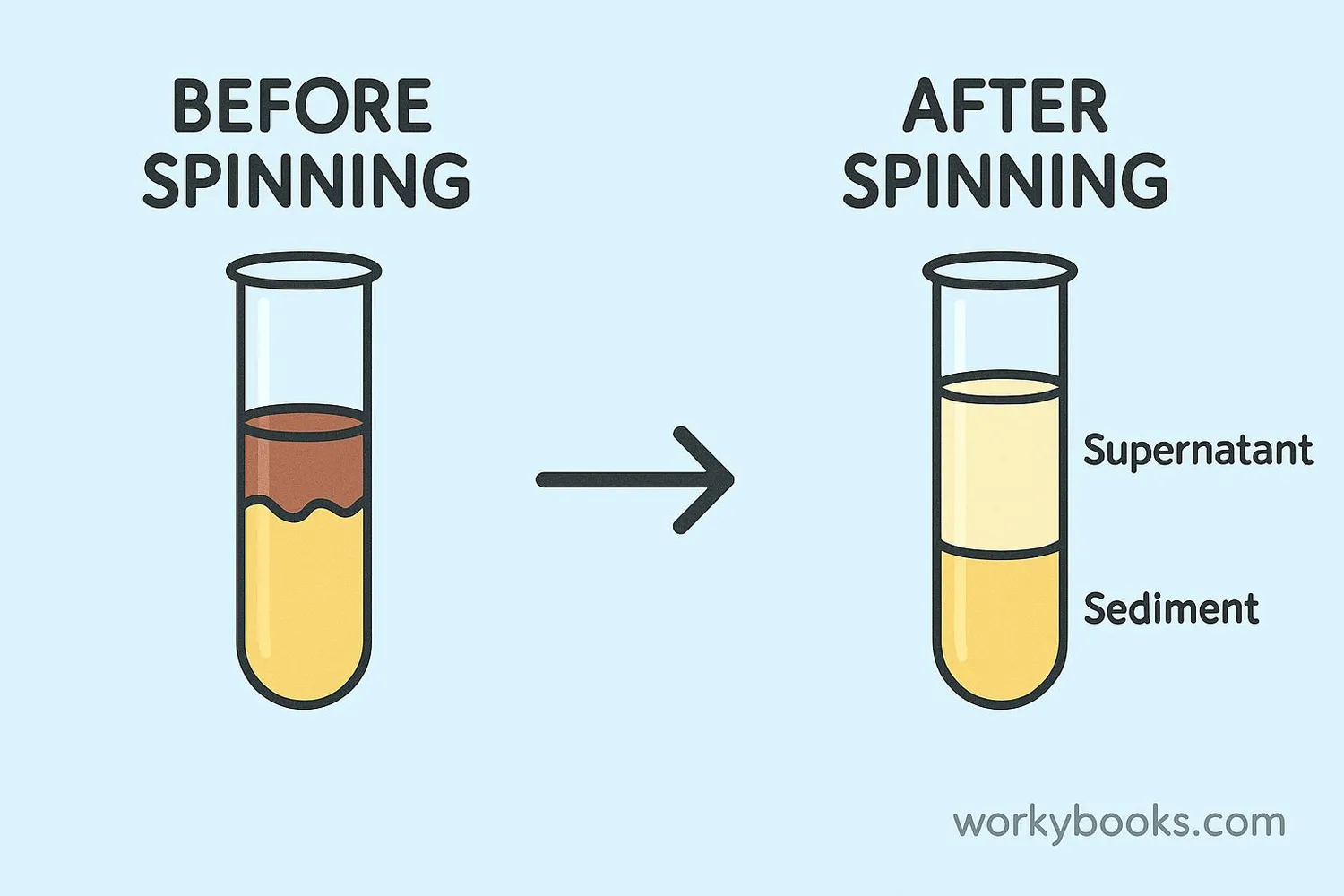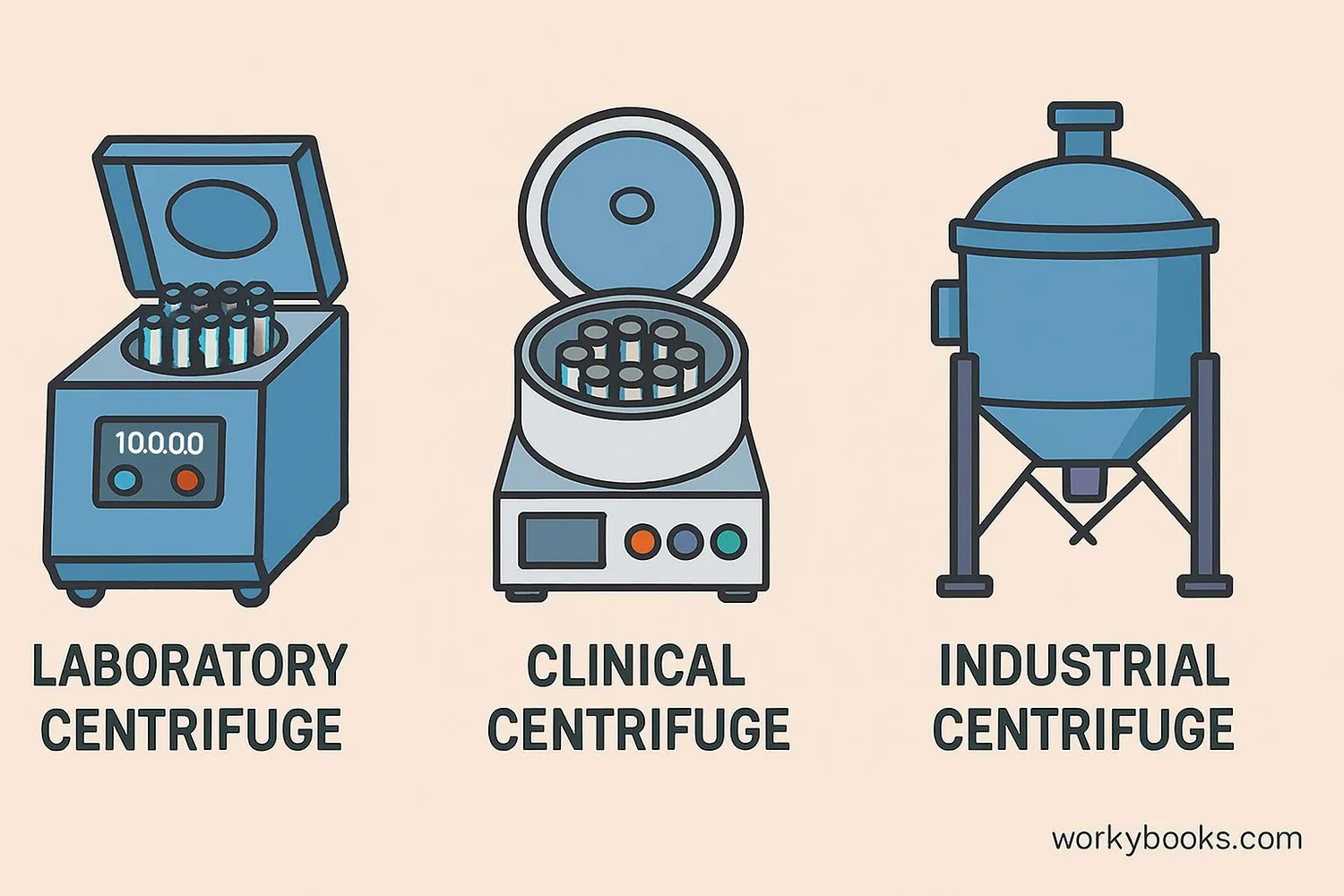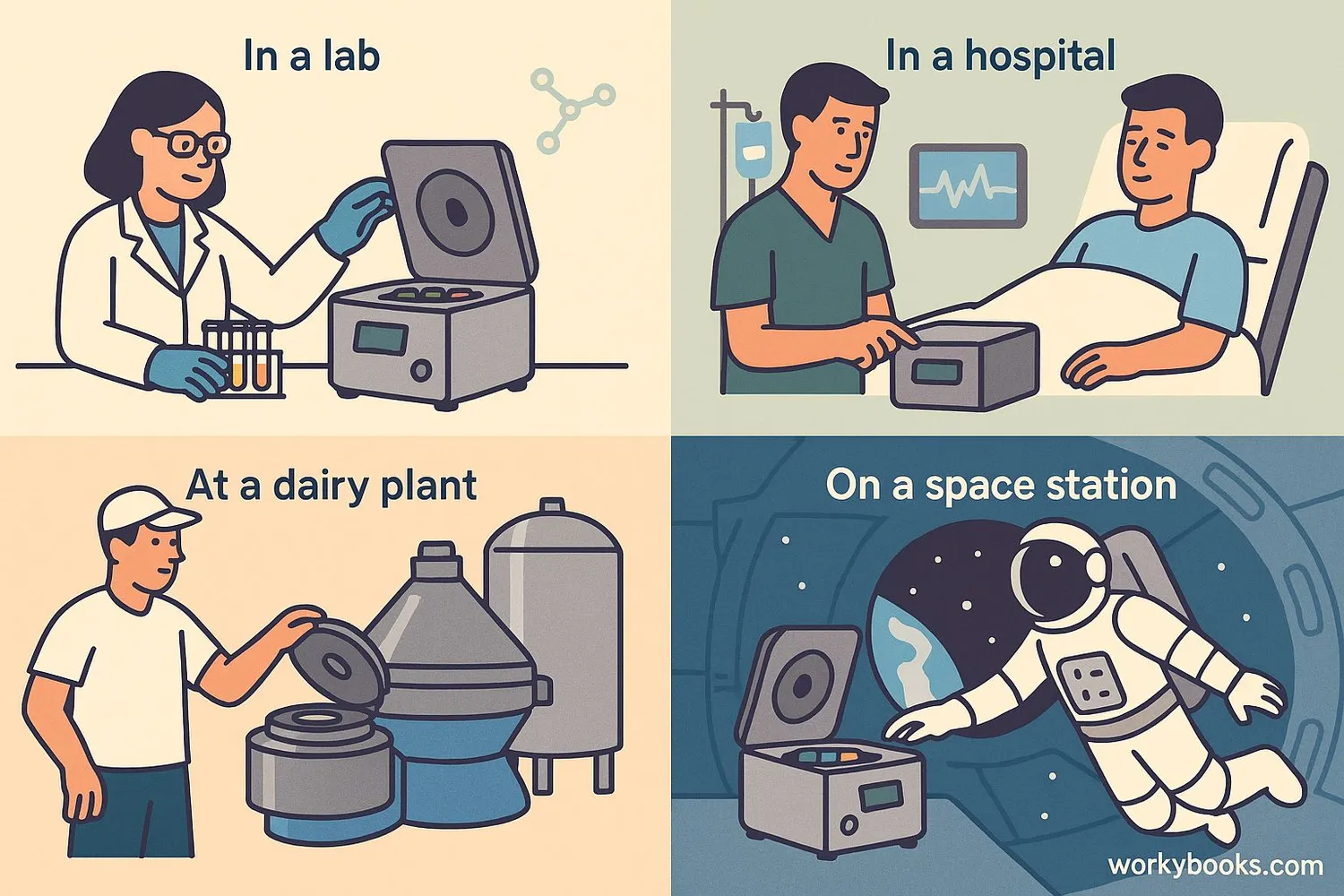Centrifuge - Definition, Examples, Quiz, FAQ, Trivia
Discover how spinning helps separate materials in science and everyday life!
What is a Centrifuge?

A centrifuge is a machine that spins very fast to separate materials! It uses centrifugal force to push heavier particles to the bottom and lighter particles to the top.
Think of it like a merry-go-round at the playground. When you spin fast, you feel pushed toward the outside. A centrifuge does the same thing to liquids, pushing heavier parts to the outside!
Centrifuges are used in science labs, hospitals, and even in washing machines to spin water out of clothes!
Science Fact!
The first centrifuge was invented in the 18th century by military engineer Benjamin Robins to study air resistance!
How a Centrifuge Works

A centrifuge works by spinning samples at high speeds. This creates centrifugal force that pushes heavier materials to the bottom and lighter materials to the top. Here's how it happens:
Place Samples
Liquid mixtures are placed in tubes inside the centrifuge
High Speed Spin
The centrifuge spins at high speeds (up to 30,000 RPM!)
Separation
Heavier particles move outward while lighter particles stay near the center
Layering
Materials form layers based on density (heaviest at bottom)
Analysis
Scientists study the separated layers
The faster the centrifuge spins, the stronger the centrifugal force. This allows scientists to separate very tiny particles that wouldn't separate naturally.
Force Fact!
Some centrifuges create forces over 1,000,000 times stronger than gravity! This is called "ultracentrifugation."
Types of Centrifuges

There are many types of centrifuges designed for different purposes. Here are the main types:
Laboratory Centrifuges
Used in science labs to separate liquids. They spin at medium speeds and are great for classroom experiments!
Clinical Centrifuges
Used in hospitals to separate blood into plasma and cells. They help doctors run medical tests.
Industrial Centrifuges
Large machines used in factories to separate materials like milk into cream and skim milk.
High-Speed Centrifuges
Special centrifuges that spin extremely fast to separate tiny particles like proteins and DNA.
The type of centrifuge used depends on what needs to be separated and how small the particles are. Smaller particles require faster spinning to separate!
Uses and Applications

Centrifuges are used in many areas of science, medicine, and industry. Here are some important uses:
Science and Research
• Separating DNA and proteins for genetic research
• Isolating cells for biological studies
• Purifying chemicals in chemistry labs
Medicine and Healthcare
• Separating blood components for transfusions
• Testing urine samples for medical diagnosis
• Preparing vaccines and medicines
Industry and Everyday Life
• Separating cream from milk in dairies
• Removing water from clothes in washing machines
• Purifying water in treatment plants
• Separating rocket fuel components
Without centrifuges, many medical tests would take much longer, and products like cheese and butter would be harder to make. They're essential tools in modern science!
Centrifuge Quiz
Test your centrifuge knowledge with this quiz! Answer all 5 questions to see how much you've learned.
Frequently Asked Questions
Here are answers to some common questions about centrifuges:
Fun Centrifuge Trivia
Discover some amazing facts about centrifuges!
Space Training
NASA uses giant centrifuges to train astronauts! These human-sized centrifuges spin to create forces like those during rocket launches, helping astronauts prepare for space travel.
World Record
The world's fastest centrifuge spins at 150,000 RPM! At this speed, it creates forces 1 million times stronger than Earth's gravity. That's like having an elephant sitting on a sugar cube!
Ancient Roots
People have used centrifugal principles for thousands of years! Ancient Greeks used spinning baskets to separate honey from honeycombs, and medieval farmers used centrifugal force to separate grains.
Nature's Centrifuge
Maple trees use centrifugal force! When a maple seed pod spins as it falls, centrifugal force helps it travel farther from the parent tree. This natural helicopter motion is called autorotation.


